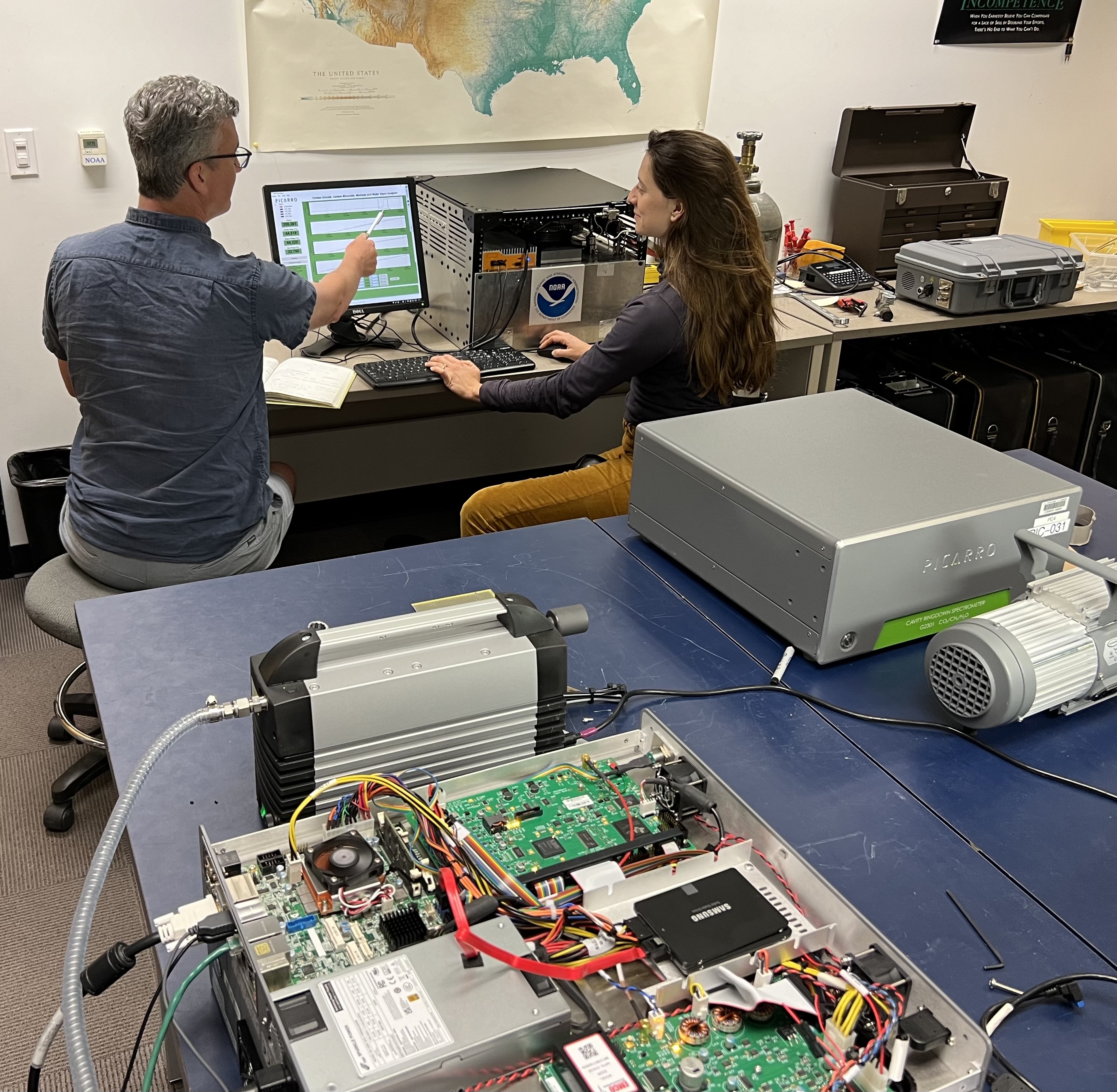
An instrumented Mooney research aircraft passes over the Northern Rocky Mountains in Montana during NOAA’s 2023 NOGAP aerial mission to capture atmospheric profiles of greenhouse gases in a series of flights across the United States. (Image credit: Courtesy of Anna McAuliffe/CIRES)
NOAA and United Airlines have announced an agreement to equip a Boeing 737 with a sophisticated instrument package that will measure greenhouse gases and other pollutants during domestic flights. It’s a first step in establishing a partnership that could significantly improve monitoring of carbon dioxide, methane and other greenhouse gases, as well as improving the accuracy of weather forecasts in the United States.
The multiyear agreement is designed as a test for a potential larger network of instrumented commercial aircraft that would allow for continual monitoring of greenhouse gases and key observations, like water vapor, above large metropolitan regions in the U.S. and neighboring countries. The agreement, a Cooperative Research and Development Agreement (CRADA), was announced today at the White House Super Pollutants Summit held in Washington D.C.
"This collaboration represents a significant leap forward in U.S. efforts to monitor and mitigate greenhouse gas emissions," said Sarah Kapnick, Ph.D., NOAA’s chief scientist. "If we can harness the capabilities of commercial aircraft we will be poised to make rapid advancements in the understanding of greenhouse gas emissions that can inform policies."
The benefits of in-flight sampling of the atmosphere
NOAA’s Global Monitoring Laboratory (GML) operates a network of 60 sampling sites around the world, and contracts with private pilots to collect airborne samples during 14 regular flight routes in the U.S. an average of three times a month. Analysis of these samples provides data that allows scientists to accurately track the global increase in carbon dioxide and other greenhouse gases, which they incorporate into NOAA’s Global Greenhouse Gas Reference Network, one of the foundational research tools used by climate scientists.
New and existing satellites have increased scientists' ability to monitor many greenhouse gas super pollutants, such as methane, but satellites do not measure them directly. Direct measurements of atmospheric composition by airborne instruments remain the most effective way to validate satellite observations.
NOAA, along with partners like NASA and the National Science Foundation, regularly conduct atmospheric research missions to make direct measurements, but these campaigns are costly and limited in terms of how much area they can cover and how long the instruments remain in the air. Installing instruments on airliners would vastly increase the number and distribution of samples that would be collected.

“We’ll be collecting data over multiple cities multiple times a day, in different seasons, and under varying weather conditions,” said Colm Sweeney, who leads GML’s commercial aircraft program. “This will allow scientists to more accurately measure U.S. emissions at sub-regional scales, which is one goal of a national greenhouse gas monitoring strategy announced earlier this year, and at just 1% of the cost of deploying research aircraft,” Sweeney said.
Combining vertical greenhouse gas and weather profiles from instruments on commercial aircraft with satellite observations would create a continuous monitoring system in the United States. By certifying this instrument set for the Boeing 737, flown by airlines throughout the world, other countries will be able to quickly adopt this technology for their own climate monitoring.
“This new partnership with United is the first step in establishing a Commercial Aircraft Greenhouse Gas Monitoring Program which will add valuable greenhouse gas measurements near large urban areas where most of greenhouse gas emissions originate,” said GML director Vanda Grubišić.
The greenhouse gas data will make a major contribution to the new U.S. Greenhouse Gas Center, an effort led by NASA, EPA, NIST, and NOAA to aggregate existing and new scientific information to better understand greenhouse gas cycling by human-caused and natural processes, she added.
While using commercial airplanes to collect important scientific data would be a new strategy for GML, NOAA’S National Weather Service has been doing it for years. Every day, commercial airliners collect critical weather observations that not only improve aviation safety and the operations of the U.S. National Airspace System, they dramatically improve the weather forecasts relied on by all Americans.
Another added benefit: Clearer skies?
The high sensitivity of NOAA’s water vapor measurements will also support United Airlines’ goal of reducing wispy contrails offsite link, which can trap heat that would otherwise escape into space. Water vapor measurements would improve the accuracy of weather model predictions for regions prone to high-altitude contrail formation. That could help the airline reduce or minimize contrail formation by altering flight paths.
Climate, weather, and water affect all life on our ocean planet. NOAA’s mission is to understand and predict our changing environment, from the deep sea to outer space, and to manage and conserve America’s coastal and marine resources.


